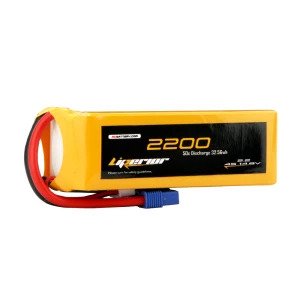RC (Remote-Controlled) vehicles rely heavily on the power and efficiency of their LiPo (Lithium Polymer) batteries. Whether you’re racing an RC car or flying a drone, the performance of your LiPo battery is crucial to maintaining speed, agility, and functionality. But like all batteries, LiPo cells have a lifespan, and there are key signs to watch for that indicate it may be time for a replacement.
In this article, we’ll explore the top signs that your RC LiPo battery is nearing the end of its life, the risks of ignoring these warning signals, and what you can do to extend the battery’s lifespan.
1. Understanding How RC LiPo Batteries Work
LiPo batteries are popular in RC vehicles due to their high energy density, lightweight structure, and ability to deliver quick bursts of power. They consist of cells that provide electricity to power motors, servos, and other components. However, over time, the efficiency of these cells declines due to chemical degradation. Recognizing this process early is essential to avoid performance issues or safety hazards.
LiPo batteries offer excellent performance, but their lifespan is limited. In optimal conditions, they last for around 300 to 500 charge cycles. If not properly cared for, they can lose their capacity much sooner.
2. The Top Signs Your RC LiPo Battery Needs Replacement
a. Swelling or Bloating of the Battery
One of the most obvious and dangerous signs that your RC LiPo battery needs replacement is swelling or bloating. This occurs when the internal chemistry of the battery becomes unstable, producing gas. The battery pack may become visibly larger, and the cells will no longer fit properly in your RC vehicle. If you notice any swelling, stop using the battery immediately.
Continuing to use a bloated battery can lead to dangerous consequences such as fire or explosion. Always dispose of bloated batteries following proper hazardous waste protocols.
b. Shorter Run Times
Have you noticed that your RC vehicle isn’t running as long as it used to after a full charge? A significant drop in run time is a clear indicator that your LiPo battery is losing its capacity. This happens because the battery’s cells degrade over time, and they can no longer hold the same amount of energy.
If your vehicle’s performance drops dramatically, despite charging the battery fully, it’s time to consider a replacement. A fresh LiPo battery will restore the run time to its original duration.
c. Difficulty Charging or Not Holding a Charge
If your RC LiPo battery refuses to charge properly or holds only a small charge, it’s a major sign that replacement is necessary. Over time, the cells may become unbalanced, which leads to inefficient charging. You might notice the battery takes longer to charge or doesn’t charge at all.
LiPo batteries should be balanced when charging to ensure that each cell reaches the proper voltage level. If your charger is unable to balance the cells or it displays an error, the battery may be faulty and should be replaced.
d. Overheating During Use or Charging
While some heat is normal during use or charging, excessive overheating is not. If your RC battery gets unusually hot during normal operation or while charging, this indicates that the internal resistance is too high, and the battery is working harder than it should. Prolonged overheating is dangerous and can lead to a thermal runaway, where the battery could catch fire.
If you consistently notice overheating, it’s a signal that the battery is near the end of its life and needs replacing.
e. Physical Damage to the Battery
Physical damage to the battery pack is another sign you should not ignore. Any cuts, tears, or punctures in the outer casing of the LiPo battery expose the internal chemicals to air, increasing the risk of combustion. If you see any signs of physical damage, stop using the battery immediately and dispose of it properly.
3. The Risks of Ignoring the Signs
Ignoring the warning signs of a failing RC LiPo battery can have serious consequences. In the best-case scenario, your vehicle’s performance will suffer. However, in the worst-case scenario, you risk severe safety issues, including:
- Fire Hazards: Damaged or bloated LiPo batteries can ignite under the right conditions, especially if they are subjected to stress or punctures.
- Explosions: Overheating or charging a compromised LiPo battery can cause it to explode, leading to injury or property damage.
- Poor Performance: A failing battery will result in shorter run times, reduced power output, and an overall lack of control in your RC vehicle.
Replacing your battery at the first sign of trouble not only protects your RC vehicle but also keeps you safe from potential hazards.
4. How to Safely Dispose of a Dead LiPo Battery
When it’s time to replace your LiPo battery, proper disposal is crucial. You cannot simply throw a LiPo battery in the trash due to the hazardous materials it contains. Instead, follow these steps:
- Discharge the Battery: If possible, fully discharge the battery by connecting it to a light bulb or motor until it no longer powers the device.
- Wrap in Non-Conductive Material: Once discharged, wrap the battery in a non-conductive material like tape.
- Recycle: Take the battery to a local recycling center that accepts electronic waste or hazardous materials. Most places have special drop-off points for batteries.
Never attempt to incinerate or puncture a LiPo battery, as this can lead to dangerous chemical reactions.
5. Tips to Extend the Life of Your RC LiPo Battery
Preventative maintenance can significantly extend the life of your LiPo battery. Here are some tips to maximize battery longevity:
- Use a Quality Charger: Invest in a high-quality charger with a balance function to ensure even cell charging.
- Store at Proper Voltage: When storing LiPo batteries for an extended period, charge them to around 3.8V per cell.
- Avoid Extreme Temperatures: LiPo batteries should be stored in cool, dry places. Avoid exposing them to direct sunlight or freezing temperatures.
- Monitor Charge Cycles: Keep track of how often you charge your battery. Most LiPo batteries have a lifespan of 300-500 cycles.
By taking proper care of your LiPo battery, you can avoid premature failure and get the most out of your RC vehicle.
Conclusion
Recognizing the signs of a failing RC LiPo battery is critical for maintaining the performance and safety of your vehicle. From bloating to shorter run times, there are several key indicators that your battery needs replacing. Ignoring these signs can lead to poor performance or even dangerous accidents, but taking action early will ensure a smooth and safe RC experience.
Always dispose of old LiPo batteries responsibly and follow best practices to extend the life of your new battery. With proper care, your RC LiPo battery will keep your vehicle running at peak performance for years to come.
FAQs
1. How long do LiPo batteries last in RC vehicles?
Most LiPo batteries last between 300-500 charge cycles. However, the actual lifespan depends on how well you maintain and store the battery.
2. What causes LiPo batteries to bloat?
Bloating is caused by the release of gas from the internal chemistry of the battery. This often happens due to overcharging, overheating, or old age.
3. Can I still use a bloated LiPo battery?
No, using a bloated LiPo battery is extremely dangerous. It should be disposed of immediately following proper hazardous waste procedures.
4. How can I extend the life of my LiPo battery?
To extend the life of your LiPo battery, use a high-quality charger, avoid extreme temperatures, store it at proper voltage, and balance charge it regularly.
5. What should I do if my LiPo battery overheats?
If your LiPo battery overheats during use or charging, stop immediately and let it cool down. Continuous overheating is a sign that it needs replacement.












